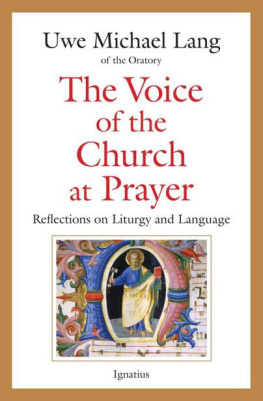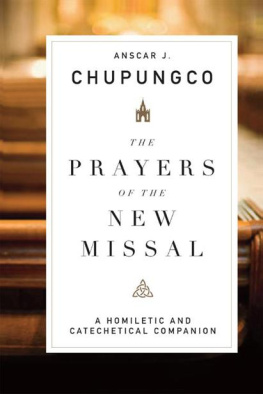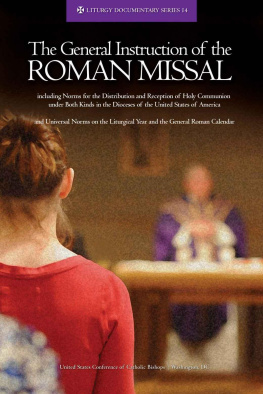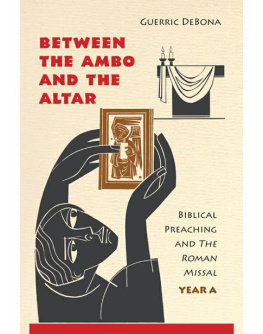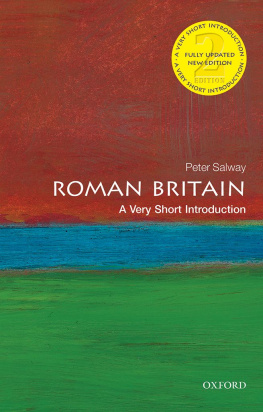IN MEMORY OF ME
In Memory of Me
A Meditation on
The Roman Canon
by
Milton Walsh
IGNATIUS PRESS SAN FRANCISCO
Cover art:
The Savior . Juan de Juanes
Erich Lessing / Art Resource, N.Y.
Cover design by Riz Boncan Marsella
2011 by Ignatius Press, San Francisco
All rights reserved
ISBN 978-1-58617-608-2
Library of Congress Control Number 2011926372
Printed in the United States of America
DEDICATED TO
HIS HOLINESS
POPE BENEDICT XVI
ON THE OCCASION OF HIS
SIXTIETH ANNIVERSARY
OF PRIESTLY ORDINATION
June 29, 2011
He gave beauty to the feasts,
and arranged their times throughout the year ,
while they praised Gods holy name,
and the sanctuary resounded from early morning .
(Sirach 47:10)
CONTENTS
I.
II.
III.
IV.
V.
VI.
VII.
VIII.
IX.
X.
XI.
XII.
XIII.
XIV.
XV.
XVI.
FOREWORD
Very early on in the Constitution on the Sacred Liturgy , the fathers of the Second Vatican Council enunciated an important principle: But in order that the liturgy may be able to produce its full effects, it is necessary that the faithful come to it with proper dispositions, that their minds should be attuned to their voices, and that they should cooperate with divine grace lest they receive it in vain (SC 11). That their minds should be attuned to their voicesthis suggests that a fully conscious and active participation in liturgical celebrations (SC 14) demands that we attend carefully to the meaning of the prayers we proclaim. The new English translation of the Missale Romanum was undertaken with this goal in mind. The desire for a translation more faithful to the Latin prayers was not an end in itself; its intent is to reveal better the biblical allusions and theological riches to be found in the patrimony of the Roman liturgy.
By its very nature, the Eucharistic celebration is an action, and if we are to appreciate the meaning of the prayers we sing or recite, we would do well to make them the subject of personal meditation apart from the Mass itself. Many of us know from experience that personal Bible study enriches our experience of the Liturgy of the Word and that silent prayer in the presence of the Blessed Sacrament allows us to contemplate at leisure the great mystery we celebrate in the Liturgy of the Eucharist. Similarly, our active participation in the liturgy will be greatly enhanced if we take time to reflect quietly on the texts of the prayers we use. This organic relationship between personal prayer and liturgical life was also advocated by the Second Vatican Council: The spiritual life, however, is not limited solely to participation in the liturgy. The Christian is indeed called to pray with his brethren, but he must also enter into his chamber to pray to the Father, in secret (SC 12).
For this reason, it is very timely that a book like In Memory of Me should make its appearance as the new translation of the Missal is being adopted. The First Eucharistic Prayer holds a privileged place among the texts used in the liturgy: it was composed in the golden age of the Fathers of the Church, and for many centuries it was the only Eucharistic Prayer used in the Latin Rite. It is a prayer that expresses the panorama of salvation history in a unique way, and this book reveals how even one word in it offers a fresh perspective on the paschal mystery. What is most striking in In Memory of Me is how strongly scriptural its reflections are. The Roman Canon was written at a time when the Christian Latin vocabulary was being shaped, and this was greatly influenced by Jeromes Latin Vulgate Bible. We live in a time when there are a variety of English translations of the Bible, and this is no doubt a great blessing. However, something is lost: when for centuries there was only one translation (as was true for Catholics with the Douay-Rheims and for Protestants with the King James Bible), certain words or phrases automatically triggered biblical associations. This was true of the Latin prayers used in the liturgy, and even a more accurate translation of those prayers can rarely capture those allusions. This book of reflections reveals those connections and helps us appreciate how profoundly biblical our liturgical prayers are.
In Memory of Me combines liturgical scholarship, theological reflection, and liturgical piety in a way that will deepen your understanding of the Eucharist and nourish your spiritual life. My hope is that this book will also encourage you to keep a copy of the Roman Missal next to your Bible and to find in it a wellspring of inspiration. As Saint Irenaeus taught us so long ago, Our way of thinking is attuned to the Eucharist, and the Eucharist in turn confirms our way of thinking (CCC 1327 [Saint Irenaeus, Adv. haeres . 4, 18, 5: PG 7/1, 1028]).
Most Reverend J. Augustine DiNoia, O.P.
Secretary of the Congregation for Divine
Worship and the Discipline of the Sacraments
PREFACE
Guidebooks sometimes describe a beautiful church as a sermon in stone. The image can be reversed: a moving poem or prayer creates a space for contemplation, a spiritual oasis. One of the precious legacies of our Catholic patrimony is the Roman Canon, which has come down to us from the time of Saint Gregory the Great (590-604). It was already a venerable prayer in his day; he made a few changes to it, and some minor alterations were effected in the intervening fourteen centuries, but this sacrificium laudis , this sublime sacrifice of praise, has reached us substantially unchanged from the era of the great Fathers of the Church. Like a church building, this prayer was created primarily for an event, the Eucharistic liturgy. But also like a church building, a visit apart from the celebration can provide material for personal reflection, reflection that in turn enriches our participation in the Mass. I hope that the meditations in this book might serve as a guidebook to the Roman Canon, so that its profound theology will deepen our appreciation for the great gift of the Eucharist.
Every kind of prayer, like every style of church, creates its own effect. Think of the solemn splendor of a Byzantine church, the soaring transcendence of a Gothic cathedral, or the joyful exuberance of a Baroque chapel. The architectural form that best conveys the feel of the Roman Canon is, not surprisingly, the ancient Roman basilica. Many of these churches are still to be found throughout the Mediterranean world, although the embellishments of later centuries often mask the simple lines of the original buildings. Several of them in Rome are relatively untouched or have been restored to their primitive form. They are somewhat off the beaten path, so few tourists visit them.
When you leave the bustle of the Roman street and enter one of these churches, your initial impression is one of austere serenity. There is a great deal of light, but it is filtered through sheets of alabaster or mica; the atmosphere is coolly refreshing. As your eyes adjust to the subdued luminosity, rows of columns carry your vision to the focal point of the building: a simple stone altar-table several feet above the floor of the nave. This altar is sheltered by a stone canopy surmounted by a cross, above which a gleaming apse-mosaic of the risen Christ and saints adds a touch of vivid color. The harmonious lines and perfect proportions of the architecture create an effect of calm and tranquility. Gradually, you notice that the walls of the church are decorated with frescoes depicting biblical figures and saints. Some you recognize, while others are obscure; whoever they may be, their presence is connected to that simple altar in the sanctuary. You begin to take in more details: the columns may not match, suggesting that they were taken from various older buildings; there are side chapels decorated by artists of different periods; the floor has intricate designs in colored stone. You explore for a while, then sit at the back of the basilica and soak in the harmonious balance of the building as a whole. After a time, you plunge back into the Roman street traffic, refreshed from the time spent in this peaceful haven.
Next page
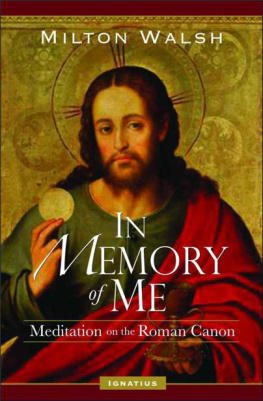

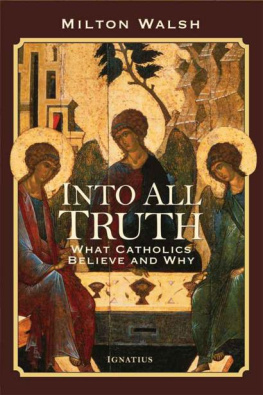
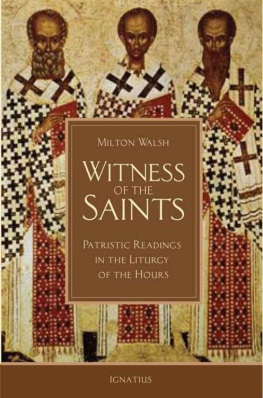

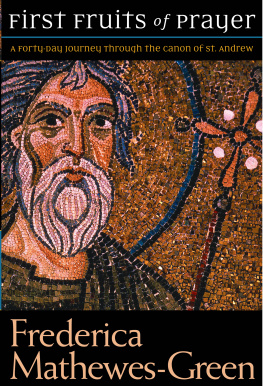

![Pope John XXIII - The Roman Missal [1962]](/uploads/posts/book/272720/thumbs/pope-john-xxiii-the-roman-missal-1962.jpg)
